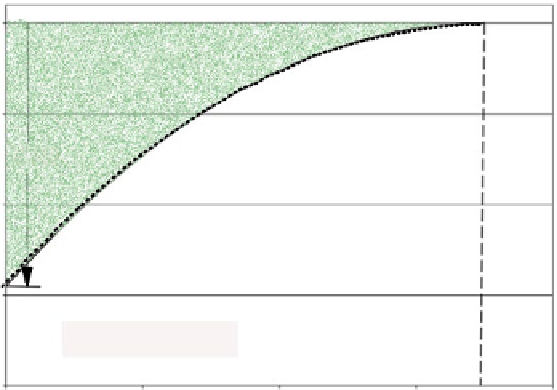Agriculture Reference
In-Depth Information
1.0
0.9
delta
suffic.
index
0.8
0.7
0.6
0
50
100
150
N
opt
200
nitrogen rate - ex ante applied - in kg per ha
Fig. 9.38
The sufficiency index SI as defined by the
ex ante
applied nitrogen rate via a generalized
plant growth function (From Holland and Schepers
2010
, altered)
an
economically optimal nitrogen rate
, which is a little lower because of the costs
of the fertilizer. So an interaction by the farmer with his local situations and experi-
ences is possible via the term C.
Compared to the use of a limiting rate method from the previous sections, the
control by the sufficiency index does not simply follow a straight line but depends
on the respective plant growth function. This can be regarded as an improvement,
since the plant growth function defines the response of the crop to nitrogen probably
better. The control via the sufficiency index does not exempt the farmer from decid-
ing about minimum- and maximum rates. The difference is that with the control by
the sufficiency index these rates just limit the application. The maximum- and mini-
mum rate do not any more define the course of the control line in between as they
do with the limiting rate method (Fig.
9.37
).
There remains one problem for all algorithms and all present fertilizing strategies
for site-specific control as well as for whole fields: they are based on informations
that are related to the past of the crop. But what is needed is an adequate supply for
some weeks in the future. This fact presents uncertainties since the weather and
especially the water supply of the crop are not known
a priori
.
9.4.10
Interactions Between Nitrogen and Water
Water stress is one of the most common limitations in plant production. When the
water supply is inadequate, nitrogen transport from the soil to the leaves is hindered.







